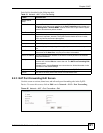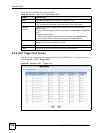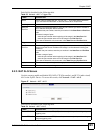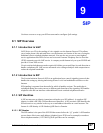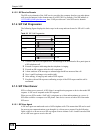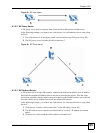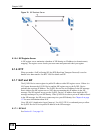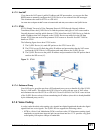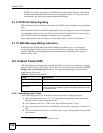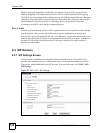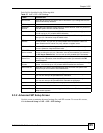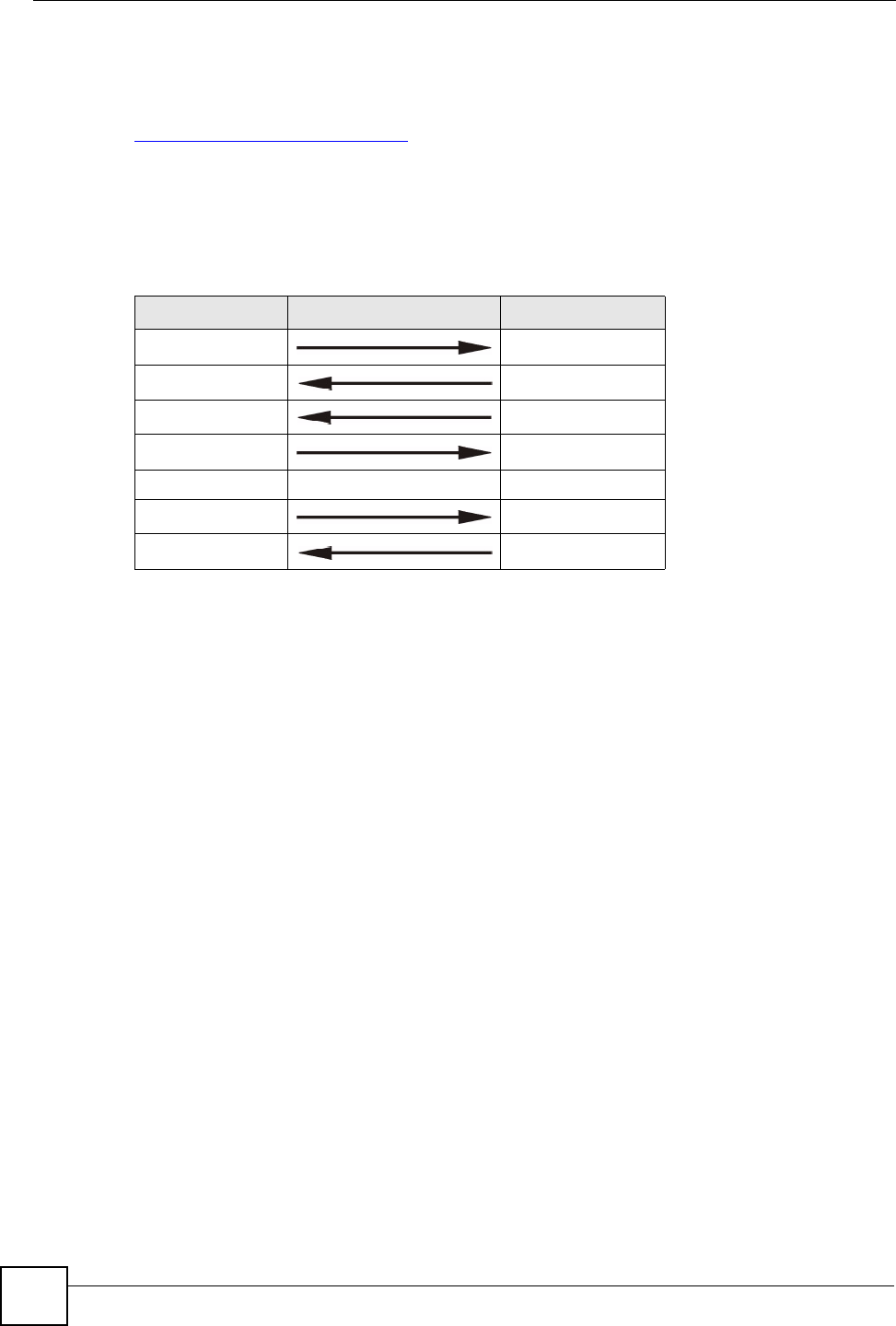
Chapter 9 SIP
P-2302HWUDL-P1 Series User’s Guide
128
9.1.3.2 SIP Service Domain
The SIP service domain of the VoIP service provider (the company that lets you make phone
calls over the Internet) is the domain name in a SIP URI. For example, if the SIP address is
1122334455@VoIP-provider.com
, then “VoIP-provider.com” is the SIP service domain.
9.1.4 SIP Call Progression
The following figure displays the basic steps in the setup and tear down of a SIP call. A calls
B.
1 A sends a SIP INVITE request to B. This message is an invitation for B to participate in
a SIP telephone call.
2 B sends a response indicating that the telephone is ringing.
3 B sends an OK response after the call is answered.
4 A then sends an ACK message to acknowledge that B has answered the call.
5 Now A and B exchange voice media (talk).
6 After talking, A hangs up and sends a BYE request.
7 B replies with an OK response confirming receipt of the BYE request and the call is
terminated.
9.1.5 SIP Client Server
SIP is a client-server protocol. A SIP client is an application program or device that sends SIP
requests. A SIP server responds to the SIP requests.
When you use SIP to make a VoIP call, it originates at a client and terminates at a server. A
SIP client could be a computer or a SIP phone. One device can act as both a SIP client and a
SIP server.
9.1.5.1 SIP User Agent
A SIP user agent can make and receive VoIP telephone calls. This means that SIP can be used
for peer-to-peer communications even though it is a client-server protocol. In the following
figure, either A or B can act as a SIP user agent client to initiate a call. A and B can also both
act as a SIP user agent to receive the call.
Table 55 SIP Call Progression
A B
1. INVITE
2. Ringing
3. OK
4. ACK
5.Dialogue (voice traffic)
6. BYE
7. OK




